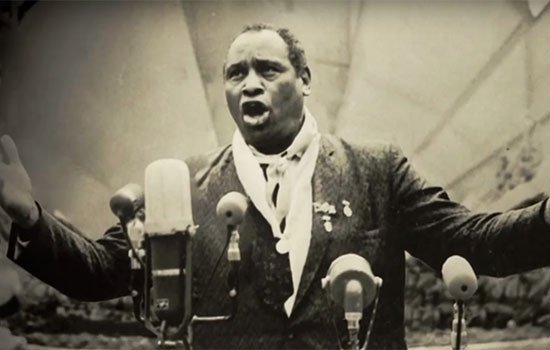On 7 March 1876, Alexander Graham Bell was granted a patent for the telephone—but did he invent it?
How did we communicate before the telephone?
It’s an aspect of modern life most of us would struggle to live without. But until the late 19th century, the quickest way to communicate was by letter—made faster with the advent of the railways, but still far from instantaneous.
The arrival of the telegraph allowed the transmission of messages across greater distances and laid the foundation for quick communication.
But how did technology advance to allow us to send and receive sound communications?
How was the telephone invented?
In the 1870s, Scotsman Alexander Graham Bell was working at the Clarke Institute for Deaf Mutes, Northampton, Massachusetts. There he met the president of the institute, a prominent patent lawyer called Gardiner Greene Hubbard.
Hubbard and Bell discovered that they shared an interest in mechanical and electrical inventions, especially telegraphy.
Later, in Boston, Bell began to investigate ways of putting his knowledge of musical pitch to use in electric telegraphy.
His ‘harmonic telegraph’ was designed to transmit several messages along the same wire by using tuned electromagnetic reeds to send and receive multiple pitches—or frequencies—simultaneously.
This device was designed as an improvement on conventional telegraphy, not as a telephone. Nevertheless, Bell began to speculate about the possibility of being able to hold conversations over long distances.
What was the key scientific breakthrough?
The following year, Hubbard began to finance Bell’s researches.
If I can get a mechanism which will make a current of electricity vary in its intensity, as the air varies in density when a sound is passing through it, I can telegraph any sound, even the sound of speech.
Alexander Graham Bell
Continuing his research with Watson, Bell made a key discovery. His tuned reeds could transmit and receive not only exact pitches, but more complex sounds.
At last, he had the basis for a system that would transmit speech.
Was anyone else working on the telephone?
Both Bell and Hubbard knew that another inventor, Elisha Gray, was also working on telephony. Hubbard urged Bell to patent the principle of speech transmission as soon as possible, thereby gaining exclusive rights to its development.
Bell and Gray submitted documents to the Patent Office in Washington DC on the same day, 14 February 1876. Exactly what went on between Bell’s lawyers and the patent officers on that day will never be known.
Was Bell’s claim to the invention disputed?
In the weeks after his meeting in Washington, Bell began to work on an improved form of transmitter with features remarkably like those illustrated in Gray’s preliminary patent application. This raised the suspicion that he had been given sight of this document in the Washington office. He always denied it.
A senior official in the patent office, Ellis Spear, dismissed the ‘interference’ between Gray’s and Bell’s applications.
On 7 March 1876, Bell was granted US patent 174465A, for a method of transmitting speech by telegraphy—the telephone.
The decision has been disputed by scholars ever since, although a 2020 paper by Benjamin Lathrop Brown has argued that recently unearthed archival sources prove Bell’s priority. Whether this will finally settle a 150-year-old controversy remains to be seen.
When was the first telephone call made?
On 10 March 1876, three days after the publication of his patent, Alexander Graham Bell made history with a peremptory instruction to his assistant Thomas Watson:
Mr Watson, come here—I want to see you
Crackly and indistinct, but intelligible, the words were the first to be spoken over the telephone.
How was the technology developed and improved?
For some reason, Bell later returned to his original ‘magneto’ transmitters and receivers and developed them into commercially practicable devices. Along the way he successfully fought off hundreds of challenges to his patent.
In 1877 Gardiner Greene Hubbard formed the Bell Telephone Company to exploit the invention.
The company controlled a highly lucrative monopoly on telephone communication in the USA: the multinational telecommunications giant AT&T is its direct descendant.
Others, including the American inventor Thomas Edison and the Welsh-born physicist David Hughes, developed improved microphones that made it easier to hear what was being said. Telephones spread rapidly from offices into homes.
What was the impact of the first telephone call?
Within months Bell could demonstrate conversations not over a few yards but over a few miles, between Boston, Massachusetts and the suburb of Somerville.
He has gone down in history as the inventor of a device that is now ubiquitous and indispensable—but we might never know the extent to which his personal circumstances influenced his success.
The novelty of being able to speak to someone many miles away was soon transformed into an expectation of 24-hour, instant voice communication anywhere in the world.












